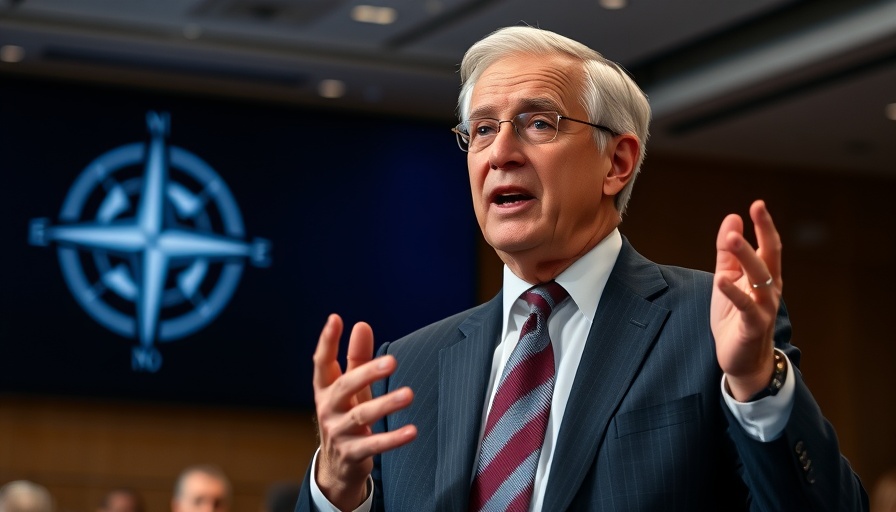
NATO's Commitment to a New Era of Defense
In a bold move aimed at recalibrating its strategic posture, NATO has announced a historic shift toward rearmament, a decision influenced heavily by geopolitical tensions and the potential return of former President Donald Trump to the White House. This shift illustrates NATO’s urgency to adapt to a rapidly evolving security landscape, particularly amid criticisms over defense spending and military readiness.
Understanding the Shift: Motivation Behind NATO's Rearmament
The motivation behind NATO's commitment to rearmament can largely be attributed to the mixed signals sent by the U.S. under Trump's administration. Trump’s skepticism toward NATO and pressure for allies to increase defense spending has stirred debate within the alliance about its future cohesion and operational effectiveness. As NATO prepares for potential changes in U.S. leadership, it is critical for its member states to ensure robust defense capabilities that can withstand external pressures.
What's at Stake? Implications for Global Security
The implications of NATO's shift could reverberate across the globe, impacting regional security arrangements and international relations. As NATO countries begin to bolster their military capabilities, there is a likelihood of less reliance on the U.S. military umbrella, which could lead to a more independent European defense policy.
Further, trust and solidarity within the alliance may be tested, especially if member states struggle to meet increased defense spending thresholds. This situation may open pathways for new alliances and partnerships outside of NATO, potentially reshaping the global power dynamics.
Potential Reactions: What Experts Are Saying
Experts have expressed various perspectives on NATO's rearmament. Some view it as a necessary response to aggressive posturing from nations like Russia and China, while others caution that such military enhancements could lead to an arms race, escalating tensions rather than promoting security. It's crucial to strike a balance between sufficient deterrence capabilities and maintaining diplomatic avenues for conflict resolution.
The Future: How Will NATO Navigate these Waters?
The future of NATO's military strategy will depend not only on member states' commitment to rearmament but also on how they manage the diverse political landscape within the alliance. Leaders must cultivate a vision of collective security that prioritizes both military preparedness and diplomatic resolution of conflicts.
Moreover, as new threats emerge—cybersecurity risks, hybrid warfare, and climate-related challenges—NATO's response will need to evolve beyond traditional military strategies to encompass broader security measures.
NATO's Role in the Bay Area and Beyond
For businesses and entrepreneurs in the Bay Area, understanding NATO's strategic decisions is crucial, particularly for those engaged in defense contracting, technology development, and cybersecurity fields. As NATO seeks new partnerships and collaborations to enhance its defense capabilities, there are potential growth opportunities for local startups in the tech industry, especially those focusing on innovative defense solutions and cybersecurity.
This changing landscape of defense spending and military collaboration reflects broader trends impacting business growth strategies and economic forecasts in the region. Entrepreneurs and small business owners should stay informed of NATO's developments, as they can significantly influence the trajectory of international business and technological innovation.
Conclusion: Stay Informed and Adapt
As NATO embarks on this pivotal rearmament shift, it is essential for businesses and individuals alike to remain aware of international developments and their implications for local economies and industries. Understanding these dynamics can equip Bay Area entrepreneurs to navigate future opportunities and challenges in a complex global landscape.
 Add Row
Add Row  Add
Add 



Write A Comment